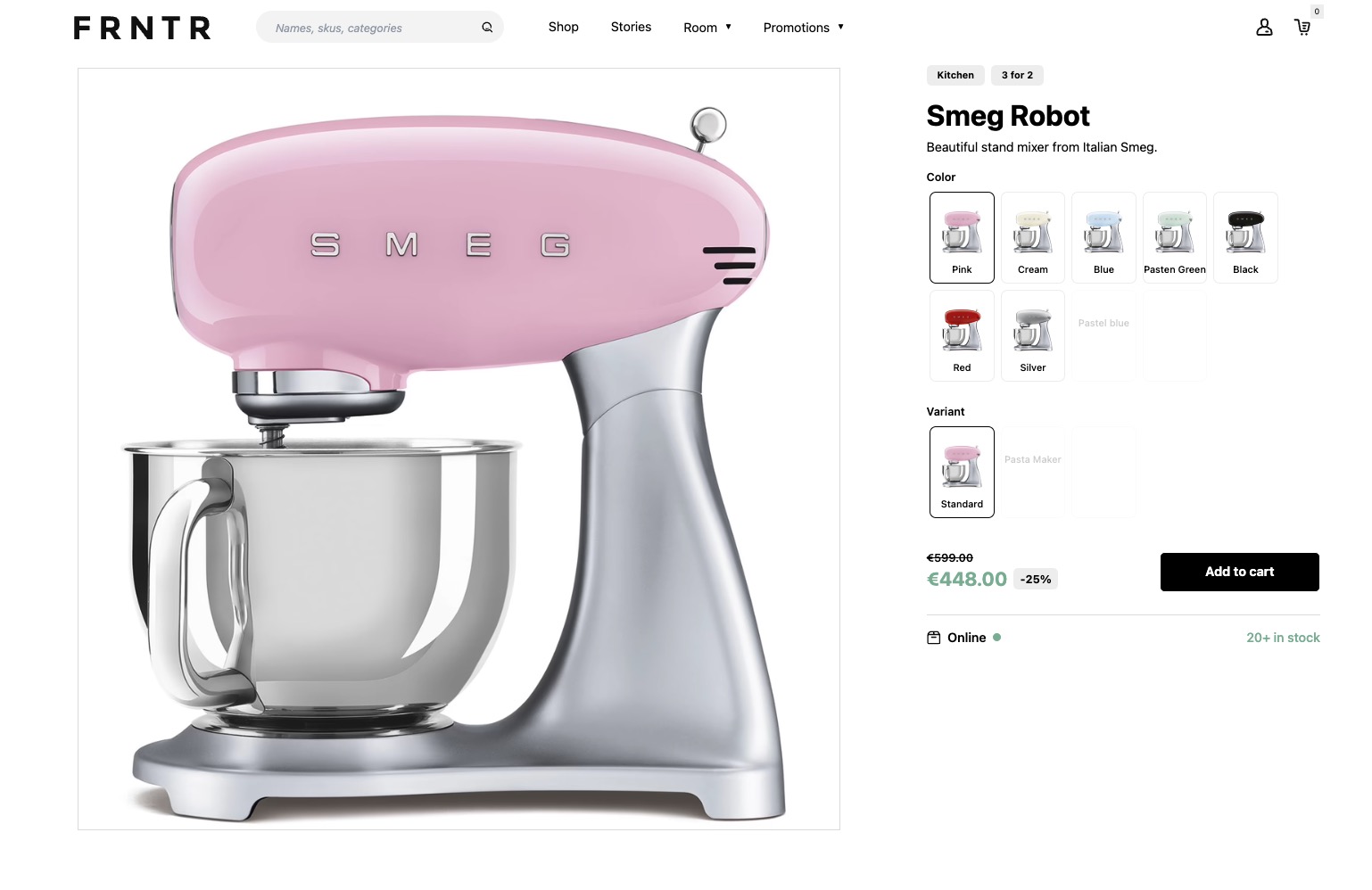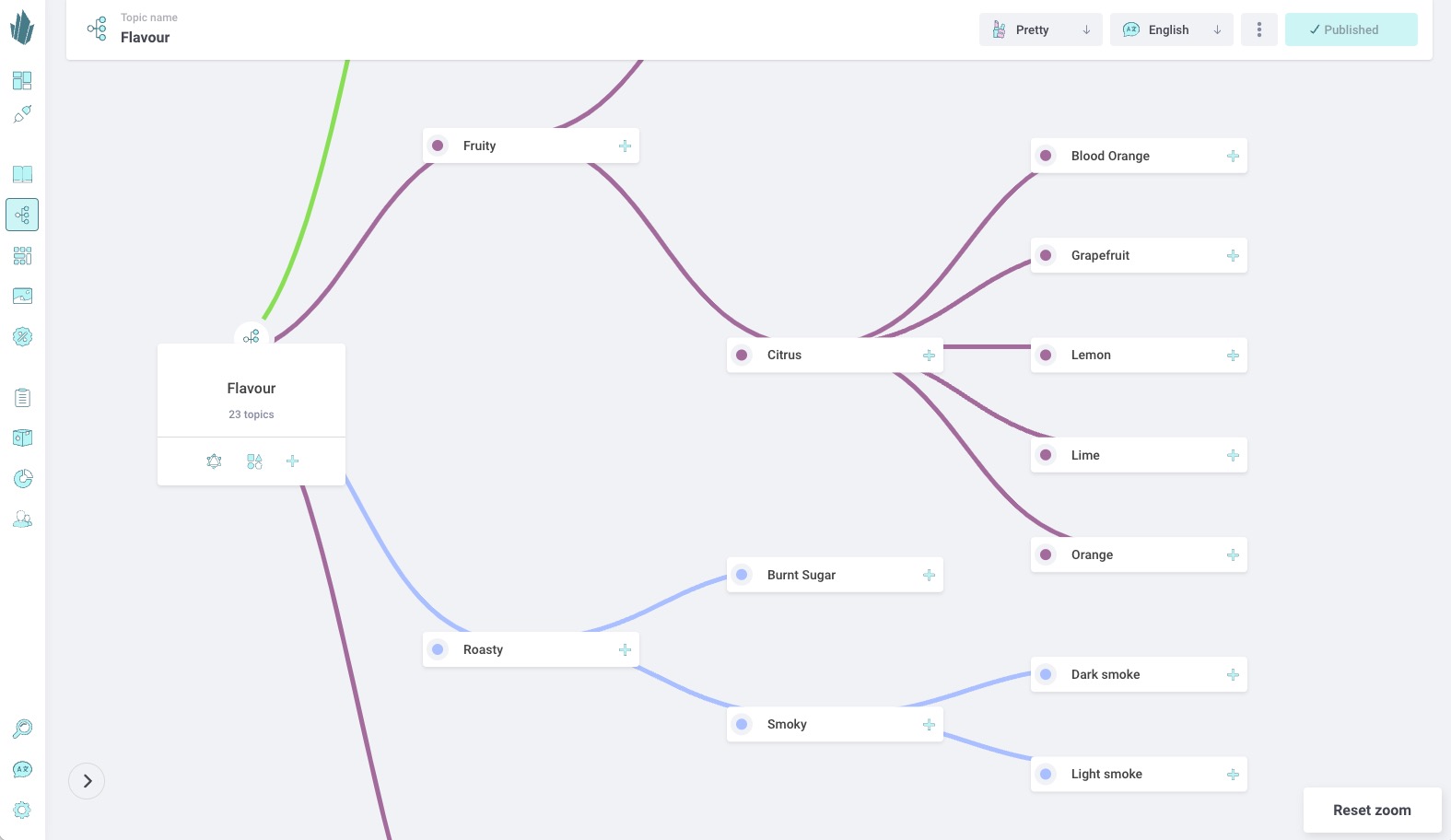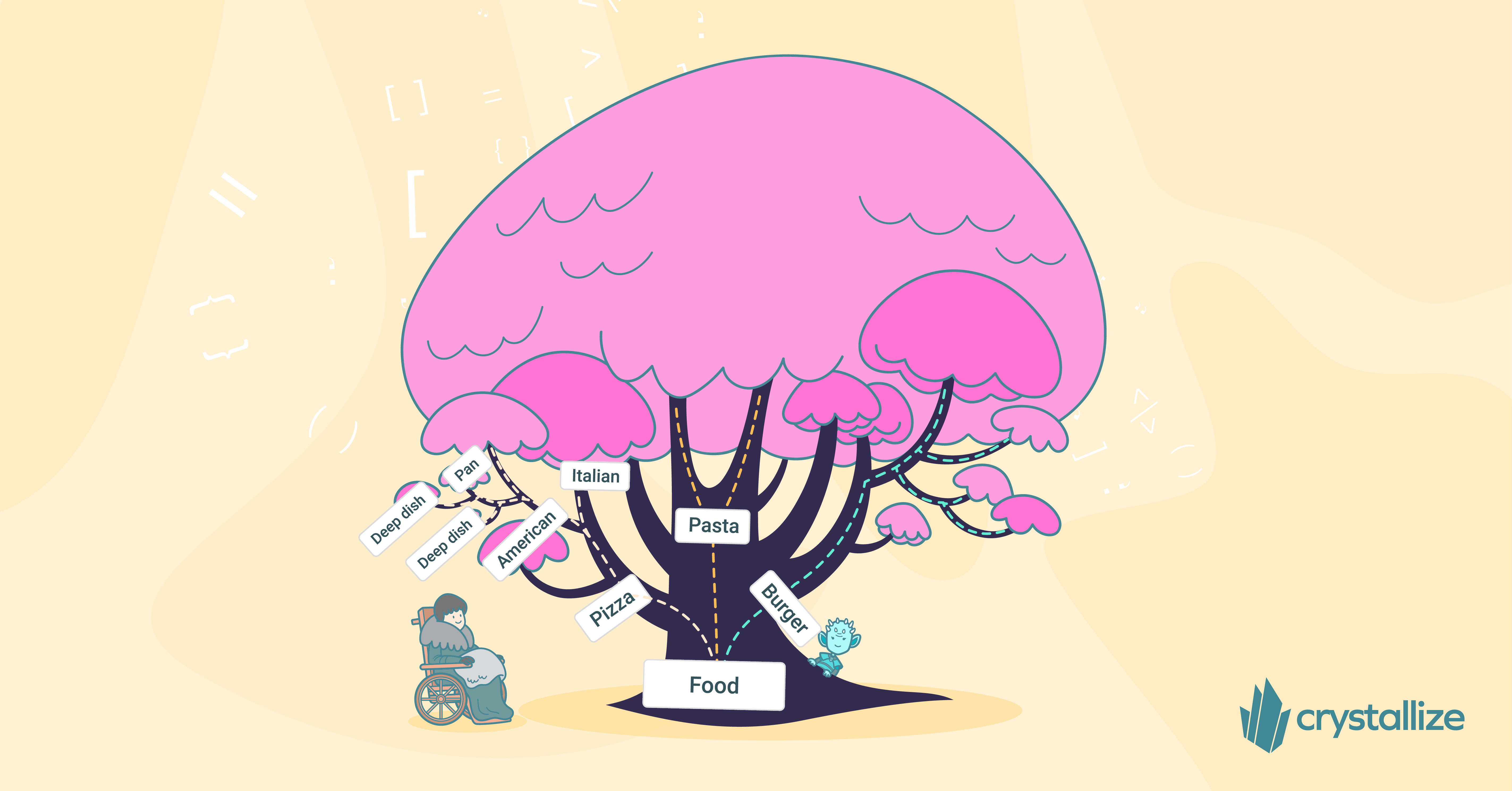Product Taxonomy: What Is It, Why Is It Important?
A great product taxonomy improves your customer's user experience and helps them find the right product more easily and quickly.

Did you know it takes users around 50 milliseconds (source) to form an opinion about your website? And if their first impression and experience are bad, 88% of consumers (source) are less likely to return to your website. How your products are organized and how easy it is for your customers to find what they are looking for play a massive part in that first impression.
That’s where product taxonomy comes in. A well-defined taxonomy helps manage large inventories and create a seamless and efficient shopping experience. It can make or break the user experience and seriously impact your bottom line.
Let’s start from the beginning.
What Is Product Taxonomy?
In the simplest terms, product taxonomy (or eCommerce taxonomy) refers to the organization of the products on your website. A good product taxonomy means your customers can intuitively find the products they need in just a few clicks.
Usually, product taxonomy will also have a particular hierarchy. You’ll have your basic categories, products that fall within each, tags to compartmentalize these products further, and attributes (like color or shape).
For example, an electronics retailer might structure its taxonomy into broad categories like Laptops or Smartphones, with further divisions into brands, specifications, or special features. This structure serves as a roadmap, guiding customers through complex inventories to find precisely what they need without friction.
Technically, you can have as many subcategories as you want, but it is advisable to keep it simple and not overcomplicate things. Otherwise, you’re back to step one.
Why Does eCommerce Taxonomy Matter for Online Stores?
eCommerce taxonomy is a structured system for organizing products. It is designed to make it easy for customers to find what they’re looking for throughout an online store, which is essential for a streamlined customer experience and efficient backend operations.
Consider this: You’re in the supermarket. You have limited time and must get some veggies, eggs, milk, cookie dough, and a ketchup bottle. You head to the dairy aisle and get the eggs, but the milk is nowhere to be found.
After 15 minutes of looking around, it turns out the milk is right next to the snacks section. And you will find the bottle of ketchup in the drinks section. Nothing makes sense, and you’re frustrated because you’ve been walking around for so long. Before you even start looking for the veggies, you just leave and take your business elsewhere.
And no wonder. It’s a horrible user experience. Similarly, users leave when they don’t find what they need on your website. This is where product taxonomy kicks in. For customers, it’s the difference between finding products intuitively versus feeling lost in an online store. From a business perspective, it influences SEO, enables effective cross-selling, and supports better data management and reporting.
Core Components of an Effective Product Taxonomy
Categories and subcategories are the backbone of product taxonomy, creating a logical structure for users to navigate the catalog. For instance, in a fashion store, the main categories are usually Men, Women, and Kids, each with subcategories like Shirts, Pants, Accessories, etc. Proper categorization evokes familiarity, satisfies users' expectations, prevents customer frustration, and improves product visibility by making each item easily accessible within its logical group.
Attributes (e.g., color, shape, size, material) and tags further classify products, enabling filtering options that help users narrow down choices quickly. For example, a red filter in the attributes of Dresses can help users interested in specific color options without scrolling through unrelated items. These detailed attributes aid in a personalized shopping experience and also boost search accuracy for better discoverability.
Cross-referencing and product linking allow products to appear in multiple related categories, promoting cross-sell and upsell opportunities. For example, a digital camera might be listed under Photography, Electronics, and its brand name, making it more discoverable. Cross-referencing helps suggest complementary items like lenses or tripods, driving additional sales.
Key Benefits of Product Taxonomy
Enhanced customer experience and navigation, better and more conversion, efficient inventory management and reporting, and improved SEO and discoverability.
This might blow your mind, but research shows poorly organized retailing websites sell 50% less than their better-organized counterparts. That’s huge!
However, poor product taxonomy affects your customers and employees, who waste time searching for the data they need and then managing it.
In fact, employees spend 15-35% of their time searching for information, and 40% of them can’t find the information they need (source). And all that seriously adds up to your time/money unplanned expenses.
The longer it takes your customers to find the product they need, the lesser the chances of them purchasing from you, or even worse, ever again returning to your website due to poor user experience, which has become one of the most significant competitive advantages you can have.
A one-second delay in page loading time causes a 7% conversion loss (source). Only one second.
Now, imagine what happens when your customers spend hours navigating through lists of products, unable to find what they need. Yikes… we guess this percentage significantly increases.
If those losses weren’t convincing enough, you should count the ones coming from inside your company. Think of all the hours lost in searching for, adding, duplicating data, later removing duplicated product data, and providing customer support. Then add them up, and you’ll see a severe decrease in productivity with an increase in operational costs.
Finally, product taxonomy also plays a role in SEO. By structuring content properly, search engines can easily crawl and index it. Furthermore, a clear taxonomy structure reduces bounce rates by delivering precise results and encouraging users to explore related products and categories.
Let’s learn more with a proper example👇
Product Taxonomy at Crystallize
At the core of Crystallize is a flexible engine for customizing the structure of your products with our concept shapes and components. You can start at the product level with any number of product variants.
Attributes on product variants are used to give semantic meaning to a specific product version. This is typically used for filtering and navigation. For example, in its simplest form, you can use attributes to clarify that you are referring to the pink standard version of the stand mixer.

Depending on the size of your product catalog, you can organize your products in multiple levels of categories. Crystallize categories would be the primary storage of your products. The category + product name usually represents your canonical URL in a web context. This hierarchy of categories would typically also be used as primary navigation in your webshop.
For example,
Products (Category)
Kitchen Appliances (Category)
Stand Mixers (Category)
Robot Stand Mixer (Product)The categories in Crystallize are defined by a folder shape, which means you can also have different types of categories to give your catalog even further descriptive meaning and information. Each shape can have a custom set of components or fields, making the structure unique.
Let’s say you are selling cars.
Then, you might have categories with specific category shapes for each level. A model series shape (category) would have unique components for describing, for example, the interior options for that model. This information also enriches the taxonomy and can be used to make your products even more findable. For example:
Mercedes-Benz (Folder shape: Make)
A Class (Folder shape: Model Series)
2022 (Folder shape: Model)
A 220 4MATIC Sedan (Product shape: Trim)Topic Maps for Multi-Dimensional Taxonomies
While hierarchical categories are used for a product's main location, you often want to describe your products' taxonomy in more ways. In Crystallize, we have the concept of topic maps, allowing you to add any unique topic dimensions.
If you are selling coffee, you might want to describe your products in terms of the individual taste profile, type of bean, and the origin of the beans. These topic maps are hierarchical, and you can describe a taste profile like Flavour / Fruity / Citrus / Lemon.
Topic maps could show similar products, search filtering, secondary navigation, or simply product labeling. The image below shows an example of a topic map for coffee flavors.

Product Taxonomy Best Practices
Although we barely touched on what is possible in Crystallize, it is an excellent introduction to the subject from a platform's perspective. Let's now discuss the best practices for building and maintaining product taxonomy, no matter the platform you are using.
Know Your Product Offering and Analyze User Behavior
The first step is to learn about your product offering and how it helps meet users’ needs. This will help you create categories and subcategories that may not be the most logical on a general level but work well for you.
For example, a skincare brand could always include a category based on the type of someone’s skin instead of only categorizing it according to product type. Similarly, if you visit the fashion giant Burberry, you’ll see the trench coat as a category. It’s undoubtedly their most famous product, and many users who want it are visiting their website. So, why not make it easy for them to find it?
AI, heat maps, and A/B testing can help collect valuable data about your users' behavior, usual funnel, browsing patterns, time spent on certain pages, etc., all of which will help you optimize your product taxonomy.
Check-in with Your Competitors
It always helps to check out what your competitors are up to.
This could be a great source of inspiration and provide additional insight into the type of product taxonomy your target customers are used to. After all, meeting your users' expectations means one step closer to making sales from them.
Define Clear Hierarchies
Creating a well-defined hierarchy is the foundation of an effective product taxonomy. Don’t make your product taxonomy too complex. Remember, it’s all about making the user experience simple.
Start by structuring main categories that reflect your core product lines, then break them down into logical subcategories to help users find items intuitively. Suppose dairy is your category for one supermarket aisle, for example. In that case, milk is one of the subcategories. The attributes could be the fat percentage or milk source, but not dairy again.
A clear hierarchy minimizes confusion, enhances user experience, and supports easy backend management by ensuring products are placed where customers expect to find them.
Using Synonyms and Aliases for Broader Searchability
Integrating synonyms and alternative terms is essential to account for variations in how customers refer to products. For example, a product labeled as joggers might also be called sweatpants or track pants. Including these aliases in your taxonomy enables users to find what they’re looking for regardless of terminology, reducing search abandonment and supporting better SEO results through enhanced query match.
When We Talk About SEO...
A good product taxonomy will help your website and Google's searchability. Research keywords and competition before setting the category names in stone and maximize your customer and Google data. Don't forget to pay attention to images, URLs, meta titles, and descriptions. You can find more on eCommerce SEO here.
Challenges and Pain Points in Product Taxonomy
Maintaining a consistent taxonomy becomes challenging as product catalogs grow, particularly for businesses with frequently updated inventories or diverse product lines. Consistency in category names, attribute definitions, and tagging is critical to avoid customer confusion and ensure accurate data analysis.
Then, customers may use different terms for the same product (e.g., sneakers vs. trainers), making it essential to account for synonyms in the taxonomy. With regular reviews, changes and inconsistencies can lead to a cohesive user experience and hamper the efficiency of backend operations.
Effective product taxonomy management requires clear ownership because a lack of accountability can lead to mismanagement, outdated categories, or broken links, which can impact customer experience and business operations. Defining roles and responsibilities for taxonomy updates, reviews, and maintenance ensures a well-organized catalog that stays relevant to customer needs.
Building a Future-Proof Product Taxonomy
Product taxonomy explains the hierarchy and relationships between your different products. It helps your customers understand what you are offering and more easily find the solution to their problems.
A future-proof taxonomy enhances current performance and lays the groundwork for scalable, sustainable growth across all digital channels. It is that nudge in the right direction your audience needs to keep it on your website satisfied and/or make them return for more.
BOOK a personalized 1-on-1 demo today, and we’ll show you how easy it is to set up conversion-driven product taxonomy within Crystallize.
Or, why not SIGN UP for FREE and start building?
You Should Also Read👇

Topic Maps 101
Topic maps are an ISO standard in the information management space to bundle data and the meaning of that data together. Wait, what does that even mean? Let's explain it.

Design System 101: How We Built Ours?
The design system acts as a repository for collections of reusable components and aims at closing the gap between designers and developers by providing easy access to pre-made design resources/components.

